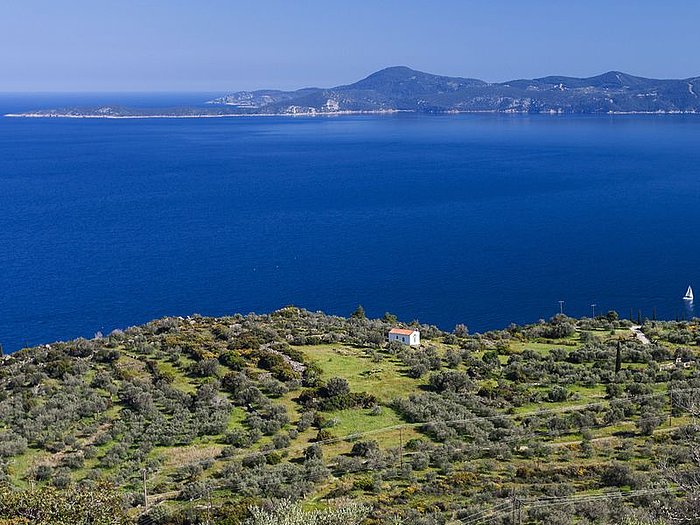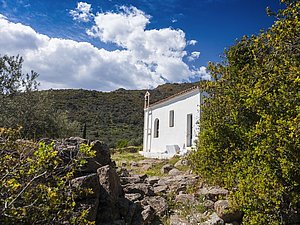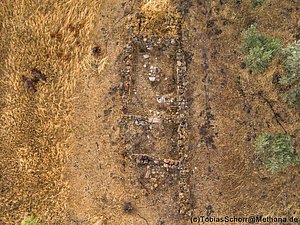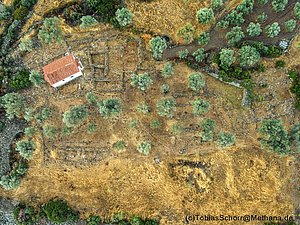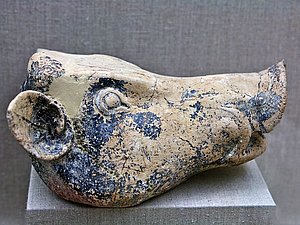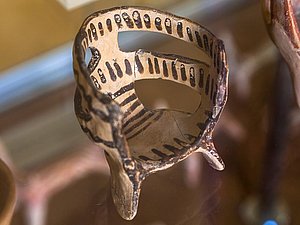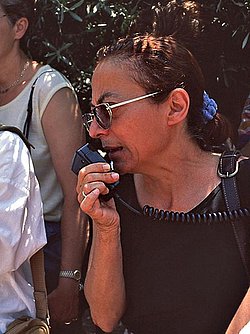Mycenean sanctuary of Methana
In 1990 the Greek Orthodox pastor of Methana asked for permission to expand the church of Agios Konstantionos & Elenis. During the on-site inspection, a dry stone wall in front of the church entrance caught the eye. The Greek archaeologist Eleni Konstolakis-Jiannopoulou was called in to examine the wall in more detail. A first room was excavated, which contained over 150 clay idols (riders, chariots, models of furniture), a rhyton in the shape of a pig's head, a natural bugle from a sea snail and a children's grave.
Certainly the place was a Mycenaean sanctuary from around 1600-1200 BC. The excavations have opened up a large part of the prehistoric settlement. In the field you discover an isolated building that may have been a prehistoric temple / megaron? Many of the finds can be seen today in the archaeological museum in Piraeus and in the archaeological museum in Poros.
The discovery of this sanctuary (Poseidon?) is a sensation and shows the importance of Methana in prehistoric times. The result of volcanism was medicinal spas - and very close to the sanctuary in the bay of Thiafi - medicinal, hemostatic salts such as alum.
This sanctuary should be protected much better and it would be nice if you could put up information signs there in the future. Together with the Mycenaean dome tombs on the Maghoula hill near Galatas, this sanctuary is one of the most important places in the Eastern Peloponnese.
The scientific significance of this discovery is unfortunately only clear to a small group of dedicated archaeologists. Mrs. Eleni Konstolaki-Jiannopoulou has made a great contribution to Methana and deserves respect for her decades of work.
Photos
Archaeological artifacts from Methana in various museums
Text by Eleni Konstolaki-Jiannopoulou
An article by the Greek archaeologist Eleni Konstolaki-Giannopoulou about the excavation in Greek:. LINK

